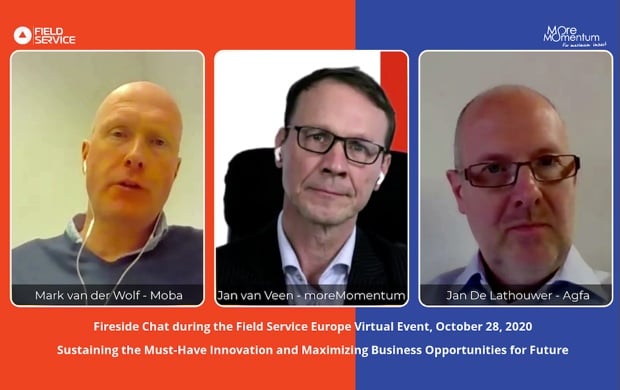Sell the value of your advanced services and monetise these
The ability to sell the value of your various advanced service offerings is vital to successfully monetising your (new) advanced services. As you...
5 min read
Jan van Veen
Mar 25, 2019 2:15:00 PM

If your clients fear too many obstacles to use your new offerings, they will not see your offering as a viable solution. This block commercial success.
This article is the fourth of my series of five in which I cover 4 critical steps which make the difference between success and failure in monetising services and data:
Read my introduction to this topic in Why it is important to monetise services and data
Too often we see that clients do not find it easy to start using new services or data-driven solutions. If there are too many obstacles for clients to adapt their way of working to your new offerings, they will not use them or will delay using them. In the meantime they will see more obstacles and resistance amongst their teams. They will not see the real value of your offerings. This is killing for the the commercial success of the newly developed services ore data-driven solutions.
If you encounter such signals, it is not always easy to get a clear picture what the problem is. The problem could be that;
So, be cautious and do not to jump to the wrong conclusions.
In this article, I will elaborate on the third of the three problems mentioned above.
The obstacles clients face using your new offerings can be categorised as follows:
The new solution you offer appears to be too expensive for your client. The investments or the extra operating cost are perceived as too high in relation to the expected value. Potentially, the problem is that the value is not well articulated by you or not well perceived by your client. Another option is that you are not talking to the right decision makers in your client’s organisation. In the worst case, the required investment and extra operating cost simply are too high compared to alternative solutions or other priorities.
Using the new solutions is too complex and difficult for your client. These new solutions require new skills and operations which are too difficult to acquire. Potentially clients do not want to be too dependent on ongoing support from external experts to allow a smooth application of your new solution.
It is often overlooked that applying new advanced solutions require:
Regardless how interesting your new solution is, it is not perceived as a viable solution for now and therefore disregarded.
Often, the new solutions can only be used and generate value in certain circumstances or regions.
For many new solutions, it takes time and effort to make sure they are adequately used and embedded in the client’s organisation. If the pressure from daily business and other projects is high, it easily happens that adopting the new solutions is put on the back burner and falls off the radar.
In essence, there could be two main reasons your clients perceive risks related to your new offerings:
Too often we focus on the technical part of our new solution, and do not give other client needs and obstacles enough consideration, when we;
An interesting example is a major metal wholesaler that was looking into adding extra value to industrial manufacturing clients through pre-manufacturing services. Like cutting, drilling, bending, packaging per product-unit for direct delivery into different stock-locations in the manufacturing line of their clients. These services would really solve a lot of challenges for low-volume-high-mix manufacturers.
However, using these advanced services implied some challenges for the clients:
Initially, the result was that most clients did not buy the new offerings, regardless of the well-articulated (financial) benefits and business cases.
Successful manufacturers have the following good practices to reduce or avoid obstacles when they develop and launch their new solutions:
So how did the metal wholesaler – mentioned in the example above – reduce obstacles for their clients to start using the pre-manufacturing services? They added the following service-elements to their portfolio;
In today’s rapidly changing industries, we see new emerging technologies and the first examples of how to successfully apply them. However, the first applications of these emerging technologies are still incomplete and complex to use. This means there is a big opportunity for you as a manufacturers to develop easier, low-barrier solutions which are easy to adopt for your clients and new market segments.
An example of this is how desktop PC’s disrupted the mini-computer market by solving many obstacles for smaller companies and households to have affordable and easy-to-use computing power.
Manufacturers that are better in helping their clients to build momentum, to adapt to their changing industries and to use the new solutions, see that their customers fluidly adopt new solutions and have a fairly high pace of scaling up. Hence, these manufacturers generate more new revenue streams with higher margins and differentiate more from their competitors.
When your new offerings induce important obstacles, you create more problems for your clients than you solve.
It is all about offering a complete, remarkable solution which really solves your customers’ entire problem.
Subscribe for the our Impulse Letter
With regular updates about service news, trends and best practices.

The ability to sell the value of your various advanced service offerings is vital to successfully monetising your (new) advanced services. As you...

Whether your service revenue is around 10% of the total business or 70%, an adequate revenue and pricing model for your various advanced service...

During the Field Service Europe Virtual Event of WBR, we had a Fireside Chat about How to advance digital services to thrive in disruptive times....